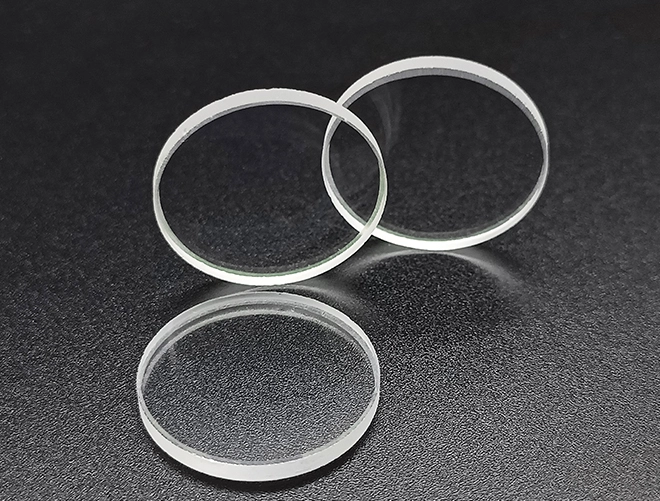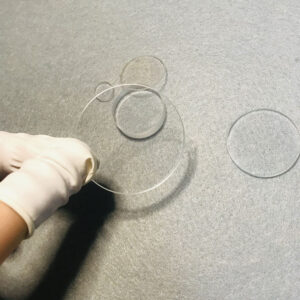Custom MgF2 Optical Windows
- <strong>Material: </strong>Magnesium Fluoride (MgF2)
- Dimension Tolerance: +0.00/-0.10mm
- Thickness Tolerance: ± 0.10mm
- Surface Quality: 60/40 Scratch/Dig
- Parallelism: ≤ 3 Arc minutes
What are MgF2 Optical Windows?
MgF2 windows are a common type of component used to protect the interior of optical instruments from environmental influences.
At the same time, they can also achieve excellent transmittion.
Also, they have a superior UV transmission range from 120nm to 7 microns.
Magnesium fluoride is one of the hardest of the fluoride materials and people often choose it in harsh environment to protect the devices.
Key Advantages of MgF2 Windows Glass
- Broad Transmission Range: Excellent optical transmission from UV, visible, to mid-infrared.
- Low Refractive Index: Minimizes reflection losses, often usable without anti-reflection coatings.
- High Laser Damage Threshold: Suitable for high-power laser systems.
- Chemical & Environmental Resistance: Stable against humidity, temperature fluctuations, and mechanical stress.
- Durable & Hard Material: Resistant to scratching and surface damage compared with softer optical crystals.
Applications
- Ultraviolet and infrared spectroscopy
The CaF₂ window has excellent transmittance in both deep ultraviolet and mid-infrared bands. Therefore,people often usen it in UV and IR spectroscopy instruments to ensure efficient and accurate signal transmission.
- High-power laser system
People often use it as protective windows or optical interface of laser devices, and is suitable for industrial lasers and research laser equipment.
- Thermal imaging and infrared detection
The CaF₂ window can transmit light well within the ranges of 3 – 5 μm and 8 – 12 μm, and are commonly used in infrared thermal imaging cameras, night vision devices and infrared sensors.
- Astronomy and Aerospace
In astronomical telescopes and satellite optical systems, CaF₂ is used as a key optical window and optical component due to its low dispersion and wide spectral characteristics.
- Medical and scientific instruments
People often choose them in microscopes, analytical instruments and biomedical imaging systems, to enhance image resolution and signal transmittance.
If you have any other requirements, you can view our other windows.



